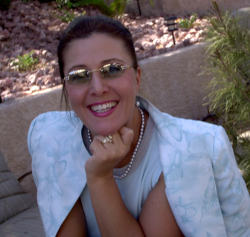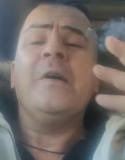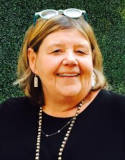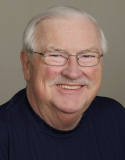Night of the Living Dead in Las Vegas (Part 2)

Part 2 of my report about attending a coroners convention in Las Vegas.
We’re all going to die sometime — hopefully a long while from now and not in too much pain.
When that happens, someone, we do not know, who we’ve likely never met before, will determine our cause of death. The overwhelming majority of deaths in this country occur from sicknesses and other natural causes. Some die from accidents. Others are suicides. However, some deaths arouse suspicions. A small percentage even involve foul play — even murder. That’s where the science of forensic pathology comes in. These experts with strong stomachs and a formidable fortitude examine bodies, collect the evidence, and ultimately make determinations that can sometimes produce far broader implications, not just for survivors of the deceased, but for society, as well.
In my previous essay, I described those who do this extraordinary line of work as peace givers. They give peace to those who must bear the void that death bestows. But they are also firewalls. Were it not for their training, experience, and dedication, it would be much easier for bad people to get away with really terrible crimes because they’d never have to fear being caught. Hence, these experts provide a monumentally important function simply by virtue of being the last checkpoint on life’s journey. They assigned to check off on the last line of the final act of our earthly existence.
Earlier this week, I attended an exclusive presentation at the annual conference for forensics pathologists, which met here in Las Vegas. This sort of thing is normally closed to the public, for good reason. It’s for experts in the field, and that excludes me. In fact, I’m probably the last person they would want to attend this sort of conference, given the bombastic possibilities that exist for someone willing to take advantage. I have no science nor criminal justice background, so I didn’t belong. That said, I am about to be your eyes and ears.
Continuing from PART 1, here are some other cases I remember from the presentation. [Disclaimer: I didn’t take notes, so forgive any errors or omissions — which will be corrected by anyone who wishes to send me a private email, noting the error.]:
- One of the most gruesome series of crime photos of the conference was of a husband who was shot in the face by his angry wife. While sleeping in bed late at night, the wife, for reasons unknown, decided to end the marriage abruptly, without using conventional channels such as filing for divorce. She took the fast route. The woman grabbed a handgun, muzzled the firearm into a large pillow that was folded in half, then placed the bulky faux-silencer over her soon-to-be-former husband’s face, and finally pulled the trigger. It wasn’t disclosed if the family had regular maid service, but let’s just say the linens sure needed to be changed by looking at the photographs. The most interesting aspect of the case from a forensics standpoint was the altered state of the gun chamber when engulfed in foreign material like a stuffed pillow. The crime scene investigators found a large number of fibers within the gun mechanism, which were blown off the pillow when the bullet was fired and before the gun could recoil into a rest position. The presentation emphasized that no part of any investigation should be overlooked or left to interpretation or chance. Sure, the wife likely killed her husband. However, the precise methodology she used during the grizzly murder — including proof of intent to kill (she couldn’t claim the shooting was accidental or a crime of passion with pillow fibers trapped inside the gun chamber) — helped prosecutors establish that this was a case of premeditated murder.
- Something we might not think too much about — the elderly can be murdered with just as much ease and frequency as younger people. Dr. Michael Baden pointed out that elderly abuse (and even murder sometimes) are often unnoticed, unreported, and go unpunished. As more people in our society get older, this problem is worsening. In fact, there are probably far more old people killed than we might realize. Sometimes death comes from neglect or poor care. Other times, the motive is far more dubious — such as collecting inheritance or getting life insurance money. An intriguing case was presented where an 89-year-old man died inside a nursing care facility. Normally, such a death wouldn’t raise any suspicion. The forensics expert even pointed to a list of several adverse medical conditions which could have contributed to his death — everything from a history of heart problems to diabetes to simply that he was very old. The point made by the expert examiner was to not immediately jump to conclusions based on age. Sometimes assumptions can be wrong, especially when other evidence is considered. The family was suspicious about a former caregiver who stood to inherit a significant portion of the estate. When the body was examined, a foreign chemical was found inside the body in large quantities, including the victim’s blood. A blood cloth is normally red in color for obvious reasons. In this autopsy, the blood dried with a strong tint of silver, a color (and odor) which the examiner had not experienced before. This seemed to be clear evidence of poisoning. That meant murder. The forensics expert continued searching for clues, trying to determine if anyone close to the deceased had worked in the automotive field The substance was somewhat rare and was normally used as a degreaser to clean auto parts. However, no link could be found. The suspect who was to inherit money also had no direct access to the deceased. So, how could be poisoned? Police didn’t see any reason to investigate and the case lingered on for more than a year. The forensic pathologist wasn’t satisfied and remained persistent. He went to the nursing home and interviewed all the staff who were on duty that week. That produced no findings. Finally, the expert returned to the morgue and interviewed an associate who was tasked with cleaning up the dead bodies. Here’s where the mystery was solved. Apparently, prior to embalming for an open-casket funeral, the worker had washed the scalp of the deceased with a strong degreasing agent, which had spilled into the open mouth of the elderly man. While being rinsed, the mouth remained open and a large quantity of the poison had entered the orifice and had time to be absorbed into the body. At the autopsy a short time later, the sheen from the cleaner surfaced in the dried blood. Hence, no crime was committed. This was a case where the body was handled poorly in the postmortem phase resulting in a “false positive” of foul play.
- Another unsolved case involved a man who was the victim of an apparent break-in, and ultimately a murder. His body was found tied up with ropes, laying on the living room floor, tucked into the fetal position. But exactly how did he die? The man was sitting alone in his home when two robbers broke in. They found the man and tied him up with ropes while the house was ransacked for valuables. The crime lasted for more than two hours. While this terrible crime was taking place, the man was absolutely terrified. He was — in the expert postmortem analysis of Dr. Werner Spitz, who presented the case — “frightened to death.” That’s how he died. How is this possible? Isn’t that just another phrase for a heart attack? I asked Dr. Spitz about this later. He and Dr. Michael Baden provided an interesting explanation, which I’ll get to just a bit later. In the meantime, this case was interesting because the man clearly had died during the course of the home burglary and kidnapping (one could charge the suspects with other crimes too since he was restrained and gagged). The question for prosecutors was — should these criminals who were later captured and taken into custody be charged with murder, or just theft? Certainly, their intent wasn’t to kill the man. Otherwise, they’d have probably murdered him first, then taken their time rummaging through the house gathering up stolen goods. Why would the thieves waste precious time tying up the victim if the intent was to kill him later? The cause of death, in this case, was essential to determining which charges to file and what could be proven in court. Turns out, he was frightened to death. [SEE FOOTNOTE]
- Dr. Baden made an astute observation that might surprise many readers. Did you know that the United States is the only country in the world (other than Liberia, which carbon copied the American system verbatim when that nation was initially founded) that uses the grand jury system? Dr. Baden pointed out that grand juries are an ineffective way of administering justice in America. In fact, this outdated form of jurisprudence was deemed so inferior that it ended in Great Britain by 1933. Inexplicably, the U.S. still uses grand juries to bring about criminal charges, particularly in controversial cases, which are often rife with corrupting influences — including outside political pressures, the whims of ambitious district attorneys, whims of the times and general biases, and even the juries themselves which don’t always prove fair or incorruptible. Dr. Baden made strong arguments for a better system that brings about criminal charges and administers justice. Because this topic is somewhat complex and new to me, I’ll be writing about this in more detail in a later essay when I gather more information and (perhaps) become swayed by Dr. Baden’s viewpoint
I’m wary of being too much of a fanboy. But how often do you get a chance to hang out with two of the most astounding individuals in the country who essentially created a new form of science all its own and have been instrumental in some of the most famous criminal acts of the last century?
Caution was left at home and reluctance was swallowed. I wanted to know everything I could about anything these experts talked about. I had no interest whatsoever in being vocal. But I did want to ask lots of questions and was privileged to be able to do just that.
Fortunately, this was just the right forum to explore and learn more. Thanks to Dr. Baden and his wife Linda Kenney Baden, the famed New York City criminal defense attorney who defended rock icon Phil Spector in his first murder trial (she got a hung jury — his second trial without Kenney-Baden as counsel resulted in a conviction, and now Spector’s in prison “being someone’s baby” — sorry, couldn’t resist), I was invited out to a late dinner after the conference and was joined by Mark and Tina Napolitano, dear friends and neighbors who are also friends of the Badens.
I can’t imagine anyone possibly upstaging the Badens in any social circle, either in terms of expertise or intrigue. But the presence of Dr. Werner Spitz with us was a once-in-a-lifetime occasion. Dr. Spitz was born in Germany, which later became part of Poland, before World War II. As a Jew, his family faced pending doom had they remained in Germany, so the family fled just before the start of the war, a decision that very likely saved their lives and ultimately gave us the world’s foremost forensic pathologist.
Dr. Spitz lived in Israel until 1959. He knew what field he wanted to explore, and to fully do this, he had to immigrate to the United States. He’s been living and working here ever since. During the course of his education and experience, Dr. Spitz came to write the textbook on forensic pathology, considered the bible on the subject to this day. He’s worked on the assassinations of John. F. Kennedy and Martin Luther King. He also worked on the JonBenet Ramsey case, and lots of cases in between. He’s still going strong and working today, at the age of 89.
What many readers might now know is Dr. Spitz has a wicked sense of humor. With his thick German-Yiddish accent, he sounds and even looks a bit like Henry Kissinger. Okay, that’s no compliment, but you get the picture. I’ll conclude this article with three memorable dinner quips from Dr. Spitz:
- I asked Dr. Spitz why he felt compelled to leave Israel and come to the United States, way back 57 years ago. Couldn’t he have pursued his life’s work there as a forensic pathologist? Dr. Spitz responded that indeed he had worked in Israel for a while. But they ended up having just ONE MURDER in the country during the entire year. That happened when one bagel salesman killed another during an argument (true story). Dr. Spitz realized there wasn’t going to be much “action” in Israel for someone with his unique skill set. So, he when learned about an opening for a forensic pathologist in Baltimore, Maryland, he jumped at the opportunity. Paraphrasing Dr. Spitz: “I had just one murder to solve in Israel over the case of a whole year. But my first week working in Baltimore — we had 16 murders! I like to work. They kept me busy.”
- Later, I asked Dr. Baden what were the oldest human remains he’d ever exhumed and examined. Recalling that Dr. Baden had once researched the famous Romanov case, which was the corrupt Russian royal family which was murdered and hurriedly buried after Tsarist Russia fell and became the Soviet Union in 1918, he indeed confirmed that was the oldest case he could recall working on. Dr. Spitz, close to 90 in age, might have had an even older case. So, I asked him which was the oldest body he’s ever examined. “Moses,” Dr. Spitz deadpanned.
- The final case is almost too much to be believed. But it’s true. Years ago, a woman was found dead in her bed. She had died from electrocution. That might not seem scandalous. Yet, the manner of electrocution was, shall we say, shocking. Dr. Baden worked on a case where this woman was the victim of a terrible accident. The family ended up suing a private company for damages. Turns out, the woman had a rubber vibrating sex toy stuck into her vagina. The sex toy, known as a dildo, somehow short-circuited. The woman….well, you can probably figure out the rest. The woman’s family learned of this most unusual cause of death and rightfully filed a lawsuit against the manufacturer of the dildo, which had clearly suffered from a product defect. As Dr. Baden was telling the story, Dr. Spitz was on the other side of the table listening to the conversation. In mid-sentence just as Dr. Baden was trying to explain the cause of death had been from a defective dildo, Dr. Spitz leaned forward, and with his thick German-Yiddish accent, asked “she died from a defective WHAT?” Dr. Baden, who’s seen just about everything in this world immediately snapped back, “A DILDO! IT WAS A DEFECTIVE DILDO!” Dr. Spitz leaned back in his chair, nodded slightly, and then pondered the death scene momentarily. “Hmm, interesting case,” he said, without even batting an eye. “Was it laced with cocaine?”
One final takeaway: The things you hear during a dinner conversation, especially among forensic pathologists can be pretty unusual.
Note: Thanks to Linda Kenney-Baden Esq. and Dr. Michael Baden for their invitation, dinner, and friendship.
FOOTNOTE: Can someone really be frightened to death? Dr. Spitz and Dr. Baden are convinced the answer is yes. In fact, some people have died during scary events, even annual occasions like Halloween. Imagine a traumatic experience that seems to have no end. Think of a moment of terror when your body is trembling and you find it difficult to breathe. We’ve all experienced this scary phenomenon, at times. However, in the case of those with poor circulation and particularly the elderly, the extended stress of fright can cause blood vessels to reach the point of being incapacitated. During serious crimes with extended time frames, those who are vulnerable have died from atypical medical causes. Yes, you can die from fright.
TAG: Stiff (Book Review)













The problem we have with doing away with the Grand Jury system is they are spelled out in The Bill of Rights. I agree there should be a better way, but do we repeal the 5th amendment. Once we start getting rid of our bill of rights where do we stop. I believe government should be as small as practical.